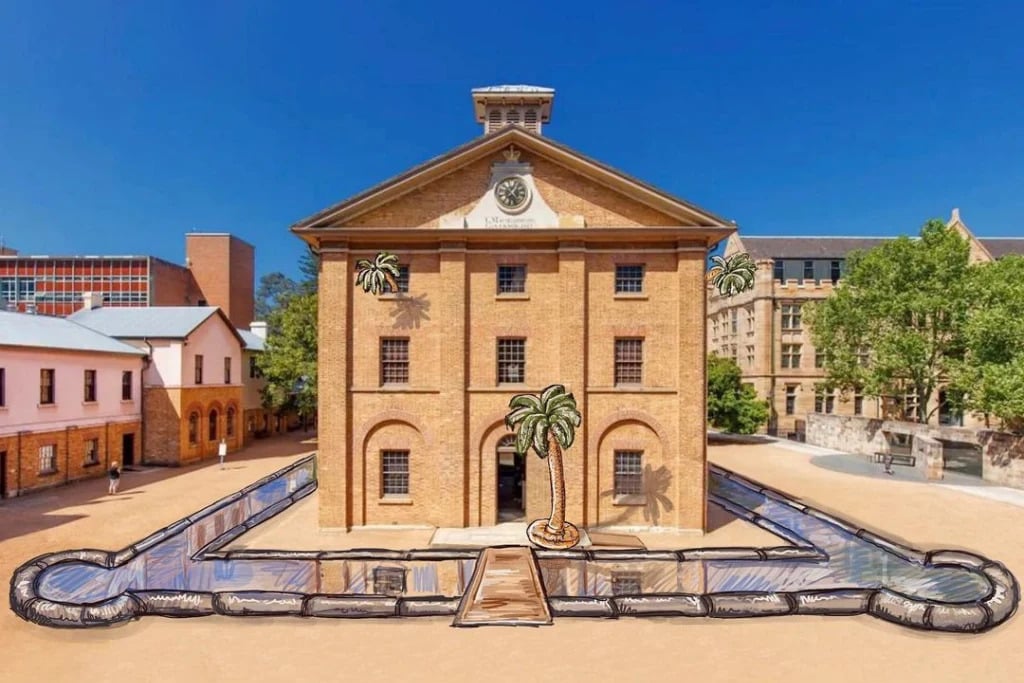Museums & Institutions
Australia Has ‘Paused’ Its Prominent Public Art Program, Scrapping Sculptor Alex Seton’s Commission for Hyde Park Barracks
Seton was 18 months into work on the program’s next commission when his project was canceled.

Seton was 18 months into work on the program’s next commission when his project was canceled.

Taylor Dafoe

One of Australia’s most prominent public art programs has been abruptly canceled, leaving an artist’s project in limbo after 18 months of work.
In May, the Australian sculptor Alex Seton was informed that his planned installation for Sydney’s Hyde Park Barracks, a UNESCO World Heritage site built two centuries ago to house convicts, had been scrapped. Upon sharing the news in an Instagram post, the artist also revealed that the entire Hyde Park Barracks Annual Art Commission program had quietly been eliminated by the government, despite being funded through 2025.
“Artists don’t often share the losses, but I thought this one had bigger implications and I’m sad for all of us,” Seton wrote.
Since Seton’s post, representatives from the Museums of History New South Wales (MHNSW), a newly formed statutory corporation that oversees historic sites throughout the eastern Australian state, have clarified that the art program is not cancelled but simply “paused pending the outcome of an independent review of the MHNSW commissioning approach,” according to the Sydney Morning Herald. “No decision has been made concerning the 2025 art commission or the program as a whole,” a MHNSW spokesperson explained.
MHNSW further noted that Seton’s project was scrapped after an “internal reassessment of priorities and processes,” and that the artist has been compensated for his work to date. Citing “sources with knowledge of the decision,” the Morning Herald reported that the cost of the artwork—reportedly $530,000—was the primary factor behind the decision.
Tapped for the prestigious Hyde Park Barracks commission back in 2022, Seton intended to erect a moat around the historic building, effectively turning it into a kind of island. The goal, according to the artist, was to reflect on the legacy of British colonialism and the ideas that made it possible.
“We are not an island, but the concept of Australia as an island has propped up the doctrine of ‘terra nullius,’ used to justify the dispossession of Indigenous peoples, promote Australia as a penal colony, and then as the promise of an escape from existing power structures to migrants everywhere,” the sculptor said.
Seton’s project was the fifth commissioned for the annual art program, which was launched in 2020. Wiradjuri and Kamilaroi artist Jonathan Jones created the inaugural installation that year, filling the barracks’ courtyard with stones shaped like emu feet. Artworks by Fiona Hall, Daniel Crooks, and Angela Tiatia and Tony Albert followed in 2021, 2022, and 2023, respectively.
In 2021, the NSW State Government earmarked $2 million in funding for the Hyde Park Barracks art program—a pool of money meant to last until 2025. But since then, the agency that overlooks the museum has undergone a great deal of change.
The sudden cancellation of the annual Hyde Park Barracks Art Commission following the recent change of government raises significant concerns for the commissioned artist Alex Seton and the NSW arts sector. @JohnGrahamALP https://t.co/KJYElc2Blp
— NAVA (@NAVAvisualarts) July 10, 2023
In November 2022, the Sydney Living Museums, a statutory corporation that formerly oversaw the Hyde Park Barracks, was rebranded as the MHSNW. The following January, the organization announced that State Librarian John Vallance would be appointed interim CEO, “while recruitment for the permanent role [was] extended to enable a more thorough and extensive global executive search,” per a report from ArtsHub.
But the hiring of Vallance, who served on the panel interviewing replacement candidates while acting as interim CEO, proved to be controversial amongst MHNSW leaders and the arts community they served. Two board members resigned from the organization because of it.
Canceling Seton’s project and pausing the Hyde Park Barracks art program was one of Vallance’s last acts before he was replaced by the new permanent CEO Mary Darwell in May. For many, the move left more questions than answers.
“For the sector, the news raises concern about the professional and fair treatment of artists, and questions about what the funding has been reallocated to,” Penelope Benton, executive director of the National Association for the Visual Arts, told ArtsHub.
More Trending Stories:
A Norwegian Dad Hiking With His Family Discovered a Rock Face Covered With Bronze Age Paintings